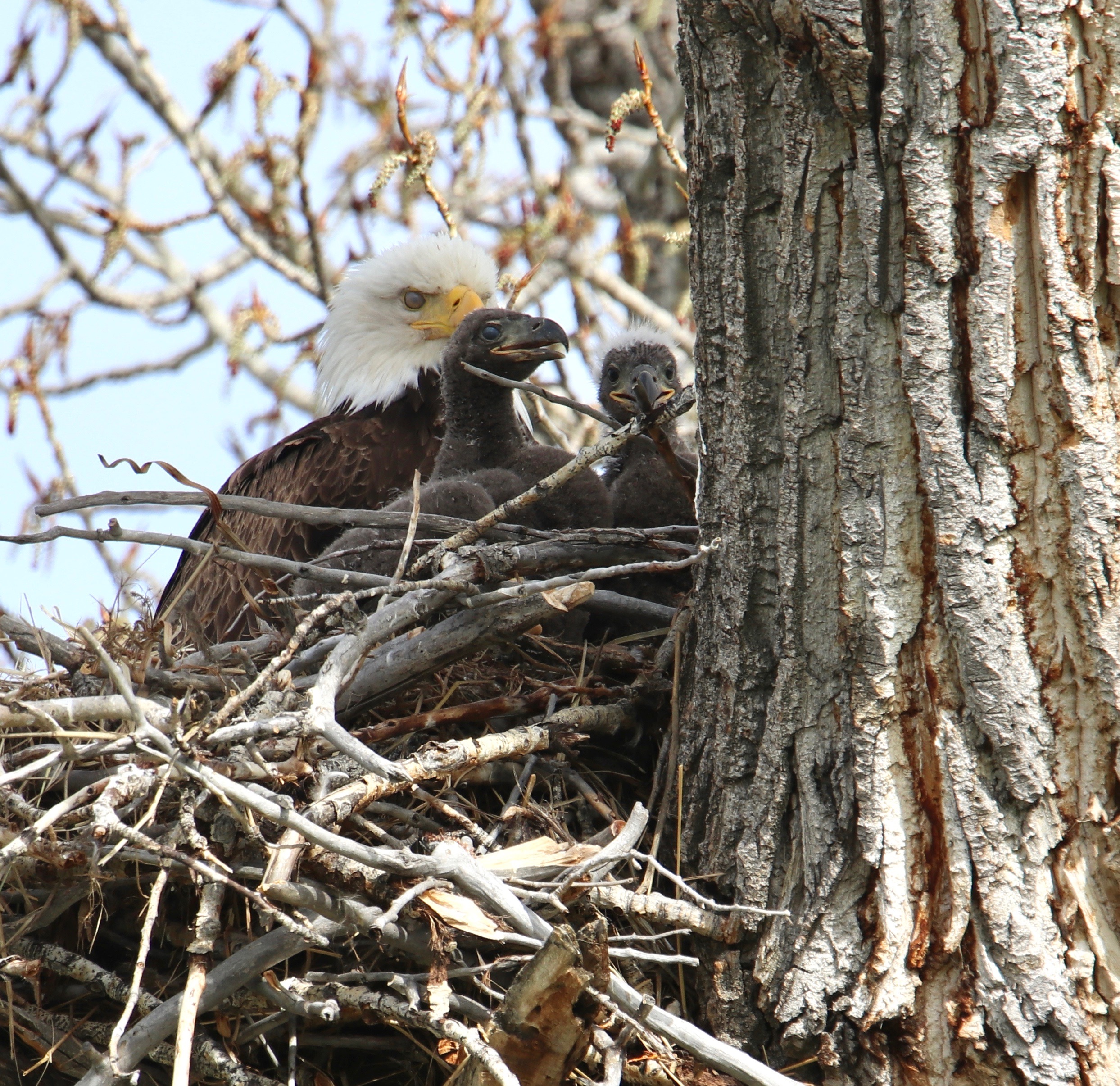By Deb Drain
I have the good fortune to be able to observe a pair of mature, strongly pair-bonded, highly successful Bald Eagles. Over the past 4 summers, they have fledged 9 juveniles, which may sound like a lot, but the average first-year juvenile mortality rate is 50% and can be as high as 80%.

Bald Eagles reach breeding age at 4.5-5 years when they develop their characteristic white head and tail and yellow eyes and beak. In IP, they start pair bonding rituals and nest reinforcement in Jan/Feb. By the end of Feb/early Mar, they are typically on eggs, and by the end of Mar/early Apr the chicks have hatched. Juveniles fledge at full adult size in Jun/Jul. They have dark eyes, beaks, and feet and are dark brown mottled with white on their throat, breast, belly, under tail, and underwings. They are very strong fliers at the time they fledge but need a few days to develop their landing skills. The juveniles remain with their parents learning how to hunt into the fall.
Bald Eagles have an average wingspan of 6-7.5 ft. Females weigh up to 14 lbs and are 25% larger than males. They catch and kill prey with their talons. Although Bald Eagles primarily eat fish, they are opportunists and will eat carrion, small mammals, large birds, waterfowl, and reptiles. This spring I observed a male Bald Eagle launch itself from its observation tree and rocket appx a 1/2 mile to a hillside to snag its quarry, a Yellow-bellied Marmot. Bald Eagles can carry appx 108% of their body weight, but this marmot was too heavy for the male. He called to the female on the nest and she traded places with him. It was all the female could do to lift and carry the marmot a few feet. She steadily worked her way uphill to a ridge from where she had a sufficient lift and a direct trajectory to the nest. Once at the nest, she carefully bit off and placed small pieces of marmot into each chick’s beak. It was truly amazing to see this behavior.

Like all living things Bald Eagles are fragile and could easily be lost due to unintended consequences from human activities. It’s up to each of us to carry on the legacy of those who saved our National symbol from extinction to ensure its future survival.
Deb is a Master Naturalist who likes nothing more than to observe nature, from the micro to the macro.
